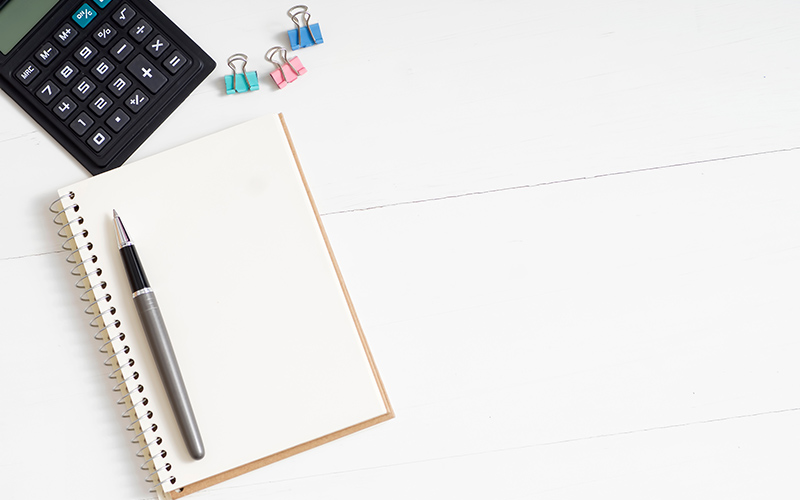From NextAvenue.org —
By Jennifer Nelson —
Looking to declutter your finances? Consider Kakeibo (pronounced kah-keh-boh), a Japanese budgeting system that literally translates to “household financial ledger.” Created in 1904 by Japan’s first female journalist, Hani Motoko, for an article in a women’s magazine, Kakeibo is a method for tracking income and spending to help homemakers organize household finances and better run their homes—a kind of Marie Kondo system of budgeting.
And just like the Japanese tidying guru who has helped millions of Americans spark joy from their stuff, Kakeibo can help you become more mindful of your actions — specifically, your saving and spending habits.
Over the past few years, Jim Powell, co-founder of a public speaking tutorial website, has studied Kakeibo in hopes of understanding it better and using it in his business.
“Kakeibo is more than a budgeting method. It’s a financial philosophy centered on mindful, deliberate spending and saving,” says Powell.
How Kakeibo works
While that sounds noble, Kakeibo is a simple practice that you can tailor to your lifestyle and is designed to do more than help you save or figure out where your money goes each month. At its heart, it’s a simple way to document your income and spending while reflecting on it mindfully — something missing from most financial budgeting apps.
In the same way Marie Kondo helped people not only clear their clutter but discover if their belongings brought them joy, Kakeibo can help you get to the heart of your relationship with money and provides a deeper understanding of why you spend and save the way you do.
In a tech-heavy world where you can purchase almost anything online with a few clicks of your phone, Kakeibo can help you slow down and consider your financial priorities.
First, you will need to track your income and expenses. Then every week or month, you are required to write down the answers to these questions:
- How much money do you have?
- How much money would you like to save?
- How much money are you spending?
- How can you improve?
That last open-ended question is designed to encourage you to reflect and personalize the answer.
“Improvement doesn’t just mean finding ways to cut costs. It might mean a decision to spend more on what you enjoy (or save more for something you’re looking forward to) or spend less on purchases you didn’t value that much,” says Powell.
You may even discover how to prevent a costly unexpected expense in the future simply by studying what you learn from your answers.
The gist of the system
In other words, use the improvement question to set goals and a timeline for saving. Then break down any savings goals, like for a vacation or a home improvement project, into small chunks that you can manage monthly.
Powell likes Kakeibo but says that while it may not provide immediate results, it can improve the way you think about and manage your finances over time.
With Kakeibo, you divide your spending buckets into four pillars or categories:
Needs: Essentials like housing, groceries, utilities, car
Wants: Pleasures like takeout, hobbies, entertainment
Culture: Activities like museums, theater and books
Unexpected: Medical bills or home repairs
“Users ask themselves and then answer a series of financial questions and set saving targets. Then they keep track of their expenses, categorize their purchases and assess their spending at the end of each month,” says Steve Wilson, founder of Bankdash, a banking and credit union news site.
“Kakeibo is intended to assist you in reflecting on your relationship with money and understanding why you make each purchase,” says Wilson. “The buckets can be subjective.” You may consider your Peloton subscription or yarn you buy for knitting to be needs, not wants, for example.
The goal is to increase your savings with a simple pen and paper method by mindfully determining where and how your money works for you, helping you become more conscious of your spending patterns and identifying where you can save more.
Wilson says if you just use a budgeting app, for instance, you enter the numbers and move on, never examining what each purchase means, if it was worth it, or whether it could have been avoided and put toward your savings. Where the Kakeibo budget shines is in helping you make wiser money choices.
Advantages over other budgets
Using Kakeibo to write everything on paper and answer the questions of how to best improve can help you identify spending that doesn’t correspond with your goals or values.
“It allows you to see your spending in a realistic light and pushes you to set monthly savings targets,” says Jonathan Merry, director of Bankless Times, an alternative business and consumer finance site.
So, get out a notebook and give the century-old Kakeibo method a try. You may find that a more mindful analysis of your saving and spending habits can help you become the master of your money.
Jennifer Nelson is a Florida-based writer who also writes for MSNBC, FOXnews and AARP. Read More
KM&M CPAs: Expert individual and business accounting service
Our accounting experts at KM&M CPAs are available to handle all your individual and business accounting services. Reach us to schedule an appointment by calling 419-756-3211, sending an email to kmm@kmmcpas.com, or by filling out our contact form at this link.

